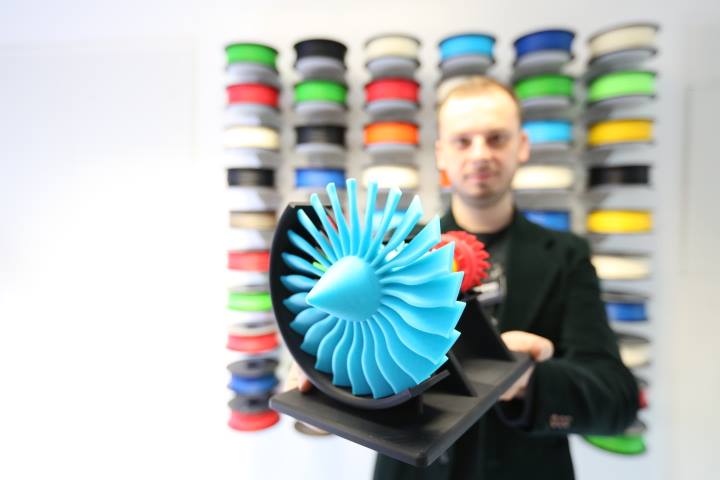Manufacturing Management Changed by R&D Department with 3D Printer
The widespread use of 3D printing is a revolution in production processes. The Zortrax M200 and related devices have changed the way R&D departments work. 3D printers can also have an influence on process management on other production stages as well.
3D printing is a technology which lets you create items quickly and easily. The leader in the field is Zortrax with its desktop M200 3D printer. Based on digital 3D models, the project is 3D printed layer after layer of special filament: a plastic which can have various properties and colors. The technology is used in many fields, from medicine to the automotive sector, to the aviation industry. 3D printers such as the Zortrax M200 are used both by amateur hobbyists and by large corporations such as Bosch. The technology is also of interest to giants such as Microsoft.
In industrial applications, 3D printing is mainly an invaluable assistance for R&D. 3D printers provide astonishing quality and precision. They are also the fastest method of prototyping and low volume manufacturing with durable materials. The printing of a single elements in a Zortrax M200 3d printer takes between one and a dozen hours. Not much, if you compare this time frame to ordering spare parts from the other side of the country or continent. That is why 3D printing, besides prototyping, is also used for creating spare parts for production machines. This application makes it possible to significantly lower costs and cut down on storage.
Research and Development
R&D departments where 3D printing is used keep working on perfecting the product, new prototypes are created and the product is improved. 3D printing is relatively inexpensive and doesn’t produce leftover waste, which in turn makes more tests possible and influences the quality of the final product. R&D engineers also work on perfecting the manufacturing process through introducing new accessories which facilitate work (such as plugs, handles, holders and other small elements which are not available in bulk, but will specifically help this one company).
If there is good information flow between departments of the company, the R&D department is able to use 3D printers to significantly improve production processes. 3D printing has already improved the application of Agile and Lean methodologies in manufacturing companies. The technology makes it possible to change manufacturing process management.

3D printed engine
Engineers can indicate the needs of teams regarding spare parts, indicate technical issues within teams and indicate processes which are not efficient enough. R&D departments are able to remedy such problems in a timely manner thanks to 3D printers. Due to low costs it’s possible to test various solutions and implement (and improve) them quickly.
3D printing also makes it possible to conduct maintenance of machinery with less difficulty thanks to providing readily available spare parts. It’s easier to adjust manufacturing and modify ideas when you have 3D printers as part of your manufacturing process. The technology offers invaluable support, allowing for rapid reactions. If you lack spare parts, the 3D printer will give them to you within a few hours. If you have an idea how to make production more efficient, the tool can be 3D printed. 3D printing allows for a significant shortening of the manufacturing chain and adjusting products to individual needs.
Use of 3D printers propels innovation in a company. This brilliant tools also develops creativity. With 3D printers it’s possible to bring ideas of R&D engineers to life and experiment with your clients’ visions. In order to operate a 3D printer you don’t need any additional skill, the only challenge lies in preparing the model. 3D printers already work 24/7 in many companies and bring tens of thousands in savings every year.